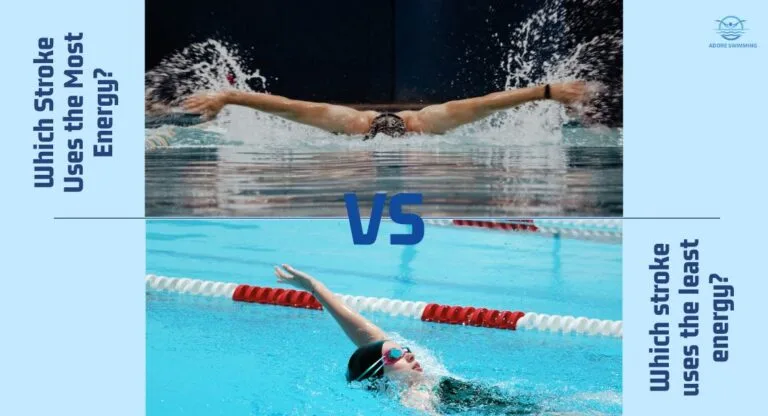Which swimming stroke uses the most energy vs. the Least Energy?
Anyone who swims knows that some strokes feel easy, while others are hard. This makes you wonder: which swimming stroke uses the most energy? And, just as importantly, which swimming stroke uses the least energy?
Knowing the answer is important for getting a better workout. Here, we’ll rank all four strokes from the highest to the lowest energy burn and explain why.
- Butterfly (Most Energy)
- Breaststroke
- Freestyle (Front Crawl)
- Backstroke (Least Energy)
Let’s examine each one to see why it falls where it does. Before that:
1. The Butterfly: The Answer to "which swimming stroke uses the most energy"
The butterfly needs most of your physical ability, so it uses the most energy and calories in the shortest amount of time. If you try to swim this stroke in a fast way, you can find yourself breathless.
The most energy-draining part of the butterfly is lifting your head and chest out of the water to breathe.
Estimated Calorie Burn: ~450 calories per 30 minutes for a 70kg person.
2. The Breaststroke
While this stroke may be slow, it is firmly in the number two spot. The breaststroke kick is the most powerful of the four strokes, requiring a great force from the large muscles in your hips and legs.
Many intermediate swimmers find breaststroke more tiring than freestyle. They report feeling exhausted in their legs and point it out.
Estimated Calorie Burn: ~400 calories per 30 minutes for a 70kg person.
3. Freestyle (Front Crawl)
Freestyle, or front crawl, is the fastest and most efficient stroke, which is a top choice for distance swimming. Freestyle is the most common stroke for exercise.
It’s easy to swim a short way, but it’s very tiring to keep going fast for a long time. The main thing that makes it hard for beginners is learning how to breathe correctly.
Estimated Calorie Burn: ~330 calories per 30 minutes for a 70kg person.
4. The Backstroke: The Answer to "Which swimming stroke uses the least energy?”
Often considered the “easiest” stroke, the backstroke is an excellent choice for active recovery and for swimmers who struggle with breathing in other strokes.
Floating on your back is easy. You don’t have to spend any energy on the timing and physical effort of lifting your head or turning to breathe
Estimated Calorie Burn: ~280 calories per 30 minutes for a 70k person.
How to Structure Your Swim for Better Results?
Now that you know the ranking, you can use it to your advantage:
| Your Goal | Strokes to Use | How to Do It |
|---|---|---|
| Burn Calories Fast | Butterfly (for intensity) Freestyle or Backstroke (for rest) | Swim short bursts of fast Butterfly, followed by longer, slower laps of Freestyle or Backstroke to recover. |
| Get a Strong, Full-Body Workout | Breaststroke & Freestyle | Make these two strokes the main part of your workout. They challenge your body in different ways. |
| Recover or Build Endurance | Backstroke | Use Backstroke for your cool-down, or for long, steady swims where you can breathe easily and not get tired quickly. |
Conclusion
To summarize, the answer is twofold:
- The stroke that uses the most energy is the Butterfly, due to its explosive, full-body power and the effort of lifting your body against gravity.
- The stroke that uses the least energy is the Backstroke, primarily because the ease of breathing conserves a great amount of energy.
FAQs:
Which swim stroke is the most energy-efficient?
Freestyle. You can do it for a very long time without getting exhausted
What is the most tiring swim stroke?
Butterfly. It's the most tiring by far because you have to use your whole body at once and lift your chest out of the water.
What is the slowest swim stroke?
Breaststroke. It's usually the slowest because bringing your arms and legs in between strokes acts like a brake and slows you down.
What is considered the fastest stroke in swimming?
Freestyle. It is the fastest stroke, no question. It's streamlined, and you are always pulling yourself forward.
What is the most efficient underwater stroke?
The Underwater Dolphin Kick. Kicking like a dolphin underwater is often faster than swimming on the surface because there are no waves to fight.



Leave A Comment